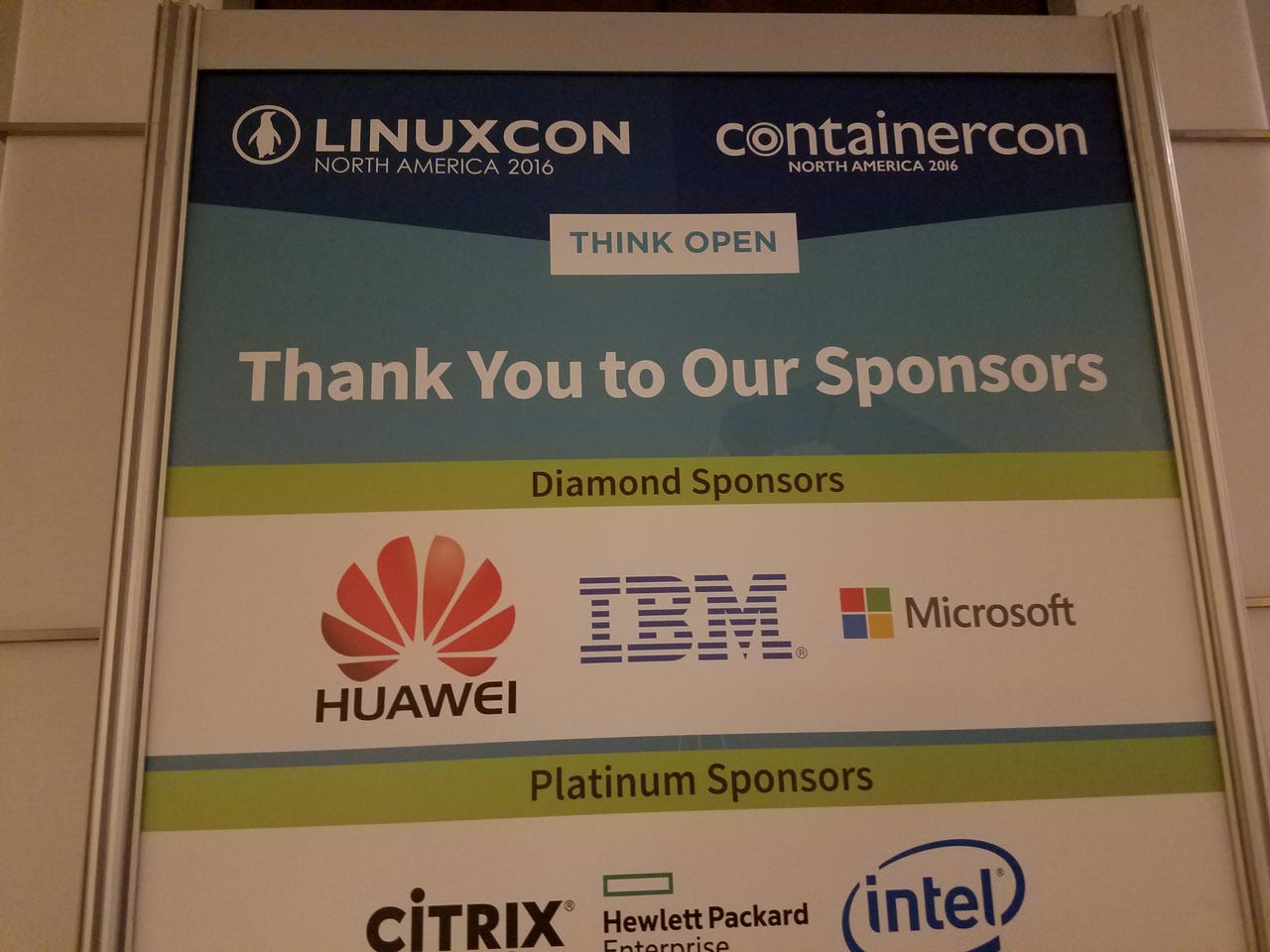The marriage of Microsoft and Linux

TORONTO -- This is not your dad's Microsoft. At LinuxCon, Wim Coekaerts, corporate VP of Microsoft Enterprise Open Source Group, came not merely to make peace with Linux, but to join forces with Linux and open-source software in a marriage of customer happiness.

Yes, Microsoft is a Diamond sponsor of LinuxCon. Things have changed! (Image: ZDNet)
Coekaerts, who joined Microsoft five months ago after heading Oracle's Linux efforts for many years, knows many of you won't buy this. In his LinuxCon keynote speech, Coekaerts admitted that "A year ago I would not have considered working for Microsoft, but Microsoft has changed."
Coekaerts wasn't easy to convince. But over several months of vetting Microsoft and its newfound love for Linux, he discovered that Microsoft has sincerely changed its approach toward Linux and open-source software.
Why? Because Coekaerts, told me in an interview, "Satya [Nadella, Microsoft's CEO] is very customer-centric. If they run Linux, and they often do, we want to make them happy. We have to play in an open, heterogeneous world."
This Microsoft sea-change has been coming over the last few years. Microsoft hired Coekaerts because it knew how important open-source is. In particular, "Azure, Microsoft's cloud program, has to be open-source and Linux friendly."
Coekaerts plans for Microsoft to work on open-source projects beyond those that contribute directly to Microsoft's bottom line. For example, Microsoft will contribute to Cloud Foundry, an open-source Platform-as-a-Service (PaaS), even though the company has no plans to ship it.
Long before Coekaerts arrived, Microsoft developers were working on open-source projects. Besides the official projects, such as making Linux work well with Microsoft's Hyper-V virtualization, "There was more stuff out there than I knew. It wasn't very organized. As an outsider you don't see it, but there has long been an open culture in Microsoft."
What's changed for Microsoft and open source in recent years is Microsoft has refocused on solving both its own and customers' business problems. That means, first, Linux is treated as an equal to Windows. "Microsoft actually uses a lot of Linux in-house. It's no longer everything has to be run on Windows internally." Microsoft is doing this because "We're solving business problems and we're very pragmatic."
It's not just in Redmond. In his keynote, Coekaerts pointed out one in three Azure virtual machines (VM) are Linux and over 40 percent of VMs in new Azure deployments are Linux. Think about that. Microsoft's new cloud customers are turning to Linux four times out of 10. Oh, and its numbers are only increasing.
Microsoft is doing far more than just opening up its cloud. It's looking on opening the future. "We're taking Windows developers and training them on Linux. We do it by pairing them up with experienced Linux developers. Matthew [Wilcox, a leading Linux kernel developer] reviews their patches and then they're forwarded to the Linux kernel developers."
Don't take this to mean that Microsoft is considering creating MS-Linux. They're not. "I'd never say never, but we have no such plans," said Coekaerts. Microsoft currently supports CentOS, CoreOS, Debian, openSUSE, Oracle Linux, Red Hat Enterprise Linux (RHEL), SUSE Linux Enterprise Server (SLES), and Ubuntu.
Microsoft is also trying to approach Linux developers on their own ground. As observed, "We can't expect them to come to microsoft.com blogs."
So, looking ahead, Coekaerts sees Microsoft's future as being both "Windows and Linux. After All, "Linux is part of our day to day life at Microsoft."
How can they convince others of this? There's only one way to show the world Microsoft is real about supporting Linux and open-source software. "We do it by showing the code."
He concluded, "We've come a long way, but you'll soon see a lot more work. We're a different company than we used to be and now is the time to prove it." Time will show if this marriage of Microsoft and Linux will work out or end in an ugly divorce.
Related Stories: